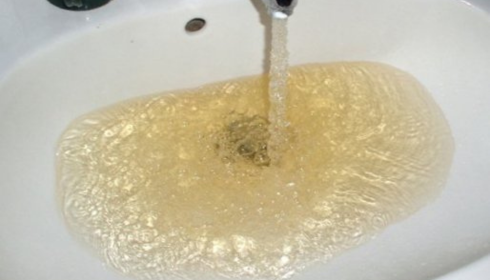There’s something oddly unsettling about pouring yourself a glass of water only to find it tinted like weak tea. It’s not dirt, rust, or coffee—it’s likely tannins. These natural organic compounds are more common than most people realize, especially for those relying on private wells or surface water sources. But what’s really behind that amber hue? And more importantly, does it pose any danger? Let’s unpack this quietly misunderstood phenomenon.
The Origin Story: Nature’s Chemistry at Work
If you’ve ever left a handful of tea leaves steeping too long, you’ve already witnessed tannins in action. In nature, they’re formed when leaves, bark, and other plant matter decompose in water or soil. Over time, these compounds leach into groundwater and aquifers, especially in forested or marshy areas. That’s essentially what causes tannin in water — a natural interaction between decaying vegetation and the environment.
The color can range from faint yellow to deep brown, depending on concentration levels. It’s especially noticeable after heavy rains, which flush more organic matter into the water table. Unlike sediment or rust, tannins don’t settle at the bottom; they dissolve completely, giving your water a consistent tint.
Taste, Texture, and Those Tea-Colored Stains
The visual aspect is just the beginning. Tannin water tends to carry an earthy or slightly bitter taste—something like weak black tea that’s been left to cool on the counter. For many, it’s not exactly pleasant, especially when that taste lingers on food or coffee brewed with it.
You might also notice yellowish-brown stains on sinks, tubs, or laundry. These stains resemble those left by iron but don’t scrub away easily. While tannins themselves aren’t corrosive, they can make cleaning a constant headache. For homeowners who’ve spent years battling these marks, it’s like a stubborn reminder that nature always finds a way into your pipes.
Should You Worry About Health Effects?
It’s natural to wonder — is tannin in water bad for you? The short answer: not really, at least not in the direct sense. Tannins are organic and non-toxic, which means they’re generally safe to drink. In fact, you consume tannins every time you sip red wine or strong tea.
However, while they may not harm your body, they can indicate other potential water quality issues. Their presence sometimes points to shallow or unprotected water sources that could be more vulnerable to bacterial contamination. So, while the tannins themselves aren’t dangerous, their company might be. Think of them as nature’s yellow flag — not a crisis, but definitely a reason to test your water.
Testing and Treatment: Finding the Right Fix
Once you’ve confirmed that tannins are the culprit, treatment becomes a game of precision. Typical filtration systems won’t cut it. Because tannins are dissolved organics, you’ll need something more advanced—like an anion exchange system or a specialized carbon filter.
For private wells, many homeowners opt for a combination of oxidation and filtration. Others install reverse osmosis units for point-of-use treatment (think kitchen sinks or ice makers). The key is understanding that tannin water behaves differently than mineral-heavy or hard water. It’s not about neutralizing pH or removing metals; it’s about breaking down organic compounds that color and flavor your supply.
It’s also worth noting that temperature and seasonal shifts can affect tannin levels. In autumn, for instance, as more leaves fall and decay, water can darken noticeably. Regular testing and maintenance help keep things balanced.
The Subtle Psychology of “Dirty” Water
Beyond chemistry and filtration, there’s something psychological about it, too. We’ve been conditioned to equate “clear” with “clean,” so even safe, tannin-tinted water feels off. People instinctively recoil, even when they’re told it’s harmless. That disconnect between perception and science is part of what makes tannin contamination so frustrating—it feels wrong even when it’s fine.
For families using well water for decades, it becomes a story passed down—“the water’s always looked like this.” Some embrace it as a rural quirk, while others can’t stand the sight. Either way, it’s a fascinating example of how water, something we rarely think about, becomes deeply personal once its appearance changes.
When to Seek Professional Help
If the color deepens suddenly or you notice changes in taste, odor, or pressure, it’s time to call in a professional. Tannins might not be the only factor. Iron, manganese, or even bacterial contamination could be blending in, creating a cocktail of issues.
Most water treatment companies can run a quick analysis to identify the exact makeup of your water and recommend the right system. And while filtration might feel like an extra expense, it’s one of those quiet investments that pay off every single day — every sip, every wash, every pot of coffee that finally tastes the way it should.
The Takeaway: A Little Color Doesn’t Mean Danger
In the end, tannins are more of a nuisance than a threat. They’re reminders that water is part of a living system — one that connects soil, roots, rainfall, and human hands. Still, if that faint tea hue in your glass makes you uneasy, you’re not wrong to want it gone.
The good news? It’s fixable. With proper testing, a good filter, and a bit of awareness, you can reclaim that crystal-clear look without losing touch with the natural story behind it. Because while water might carry traces of where it’s been, it should never make you think twice before taking a sip.

